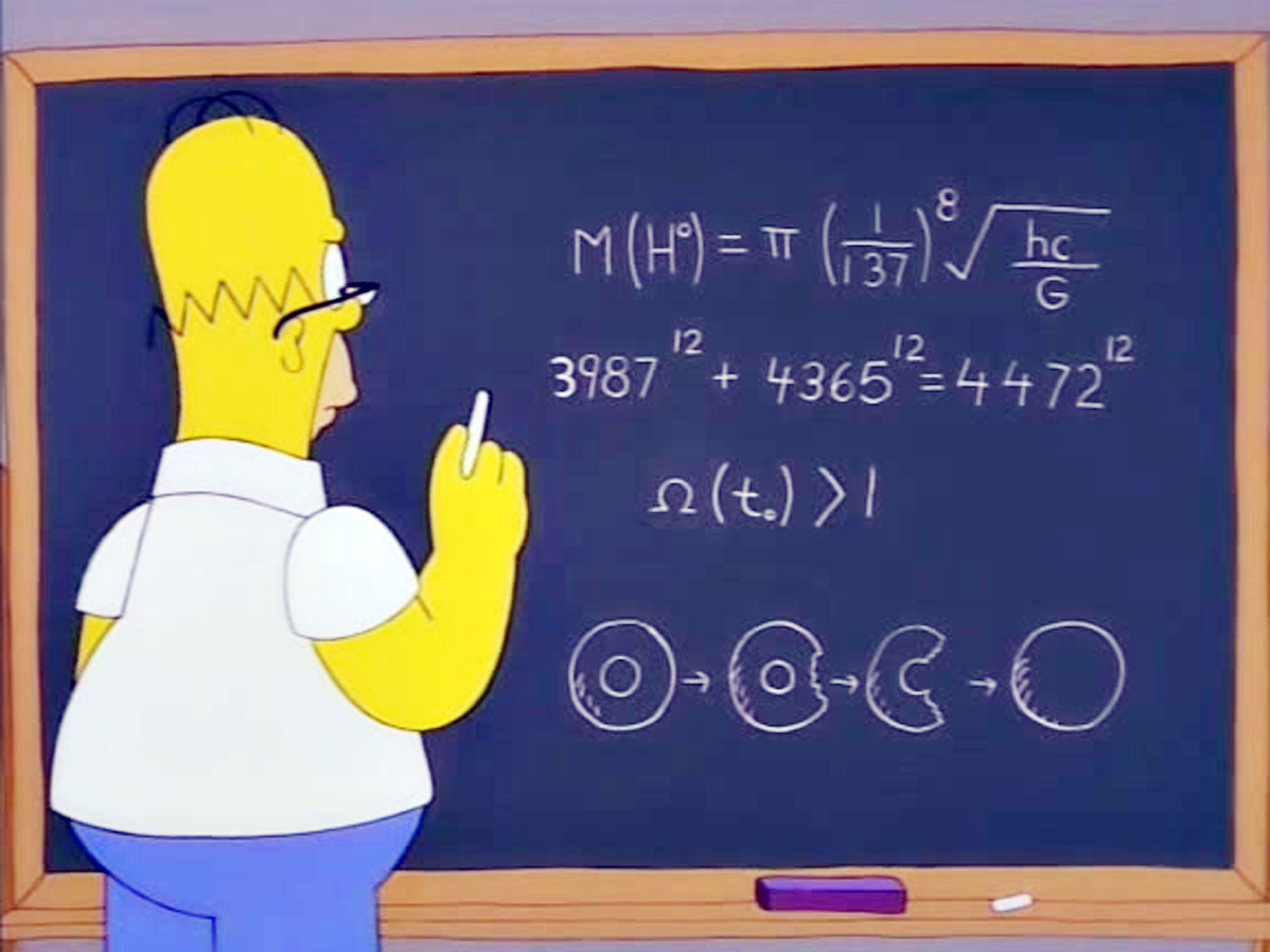The Simpsons and their mathematical secrets
The Simpsons is famously a cartoon full of surprises and forecasts that are unbelievable. Among these, one of the most fascinating and unexpected is pitted by Simon Singh in his 2013 book "The Simpsons and Their Mathematical Secrets". In the 1998 episode, "The Wizard of Evergreen Terrace," Homer presents a mathematical equation predicting the mass of the Higgs boson a full 14 years before CERN physicists discovered it. In the episode Homer suddenly becomes an inventor, creating devices such as an electric hammer and a make-up gun. In the process, he unleashes his hidden mathematical prowess by predicting that the mass of the Higgs boson will be 777 gigaelectron volts (GeV). This value is actually "not that far from" the estimate of 125 GeV, the result of the actual experimental discovery of the Higgs boson at CERN in 2012. Homer made this prediction more than a decade before the actual discovery, how is that possible? Well, it turns out that many of the authors of The Simpsons are mathematicians, and the mathematician who wrote that formula for Homer is David X. Cohen, also famous as Futurama's chief writer and executive producer. Cohen contacted one of his high school friends, David Schiminovich, now an astronomer at Columbia University, and worked with him for a few months on the equation. Quoting Singh, "The equation is a playful combination of various fundamental parameters, namely the Planck constant (h), the gravitational constant (G) and the speed of light (c)". Personal note: Using the reduced Planck constant (ħ = h / 2π) and with one π less, Homer would have obtained an impressive 99 GeV!
The other lines of the board are interesting as well. For example, although made up entirely of natural numbers, the second equation appears to violate Fermat’s last theorem, stating that in the equation xn + yn = zn, “n” cannot be any whole number greater than 2. Here the error is caused by the calculator numeric approximation.
The third line says mathematically that, at the instant of the big bang, the density of the universe was higher than the critical one. A consequence of this could be that everything ends in a “big crunch”. In reality, scientists believe the universe is not closed but flat.
The fourth line appears to how a torus is homeomorphic to a sphere, if "properly gnawed".
Anyway, as the L.A. Times says, if you want to watch a truly awesome show about the Higgs boson, check out “Particle Fever,” Kaplan’s documentary that takes viewers behind the scenes in the hunt for the Higgs boson.



Comments
Post a Comment